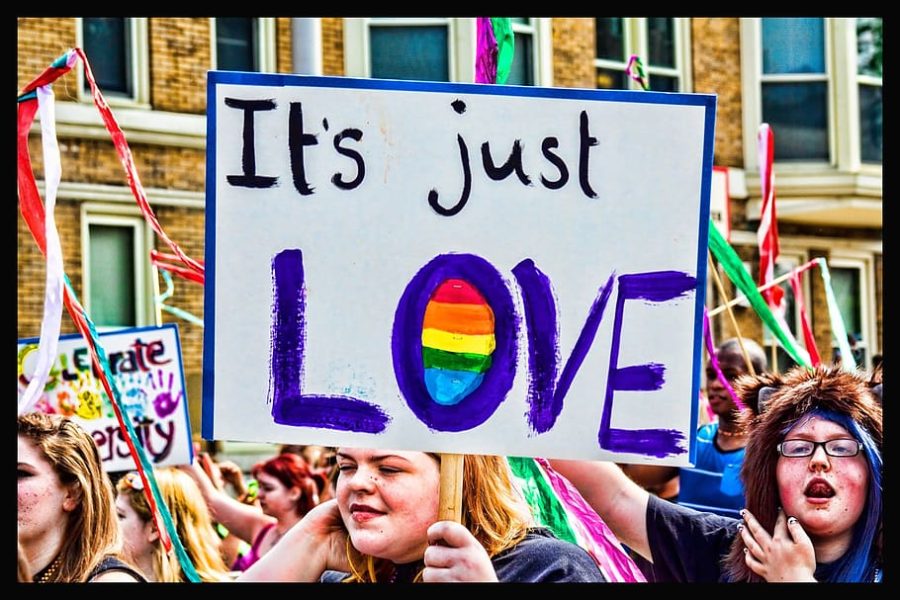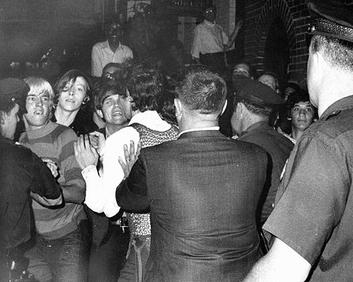
Resisting the Majority: The Role and Significance of LGBTQ+ Pride
In the sweltering summer heat in June in 1969, the Stonewall Inn in New York, a sanctuary for the gay, lesbian, and trans community, experienced yet another police raid. Unlike previous encounters, this one spurred a rebellion. Bottles and stones were hurled, and a defiant stand was made. It was a clear signal that enough was enough. Out of this spirited defiance, the Gay Pride movement was born, offering a beacon of celebration, visibilityand resistance.
To comprehend why LGBTQ+ Pride is significant – why it’s important for society to celebrate lesbian, gay, bisexual, trans, queer, and other people – it is essential to delve into its philosophical crux, assess its contextual relevance, and understand the broader sociopolitical implications.

Part 1 – Understanding Gay Pride: A Unique Form of Celebration
To understand LGBTQ+ Pride, we must first grasp the distinction between it and what could potentially be labelled as ‘Straight Pride’. At a glance, one might question why there isn’t, broadly, an equivalent celebration for straighthood / heterosexuality. Isn’t the idea of ‘Straight Pride’ an intuitive one, an equivalent counterbalance? The key to answering this lies in how people’s sexuality has been treated historically, and, in many cases, still is.
Straight individuals, despite their diverse experiences and identities, have not had to face institutionalised and societal discrimination, repression, or violence based solely on their sexual orientation. As such, ‘Straight Pride’ would be largely a product of a privileged majority, which has not endured the same struggles, stigmatisation, or systemic marginalisation as the LGBTQ+ community.
Philosopher Michel Foucault, in his work “The History of Sexuality”, analysed how power dynamics and societal norms shape our understanding of sexuality. Heteronormativity, the belief that heterosexuality should be the norm or default sexual orientation, contributes to the marginalisation of non-heterosexual identities. This marginalisation, in turn, justifies the need for a public and visible celebration of non-heterosexual identities and the assertion of their rightful place in society. Thus, LGBTQ+ Pride is not simply about the celebration of being “different.” It is a protest against heteronormative systems that perpetuate inequality. In other words, while making a vibrant assertion of the right to exist, to love, to be accepted, LGBTQ+ Pride rebels against a system that makes heterosexuality the preferred sexual orientation.
Part 2 – Power Dynamics: The Majority vs The Minority
To delve deeper, let’s consider other historical parallels. The Black Lives Matter movement, the fight for women’s suffrage, and the struggles of migrant communities all share common themes with the LGBTQ+ Pride movement. These movements are born out of a necessity to assert rights and visibility in a world that favours majorities, perpetuating systems of oppression and discrimination.

Consider, for instance, the fight for racial equality. People of colour have endured systemic racism and social discrimination for centuries. They are statistically, and across multiple Western countries, more likely to face law enforcement violence, socioeconomic disparity, and marginalisation. ‘Black Pride’ is a celebration of Black culture and history, as well as a push against systemic racial inequalities. It’s a significant distinction from ‘White Pride’, which is often associated with white supremacy, an ideology that seeks to maintain a racial hierarchy, not challenge it.
Similarly, the LGBTQ+ community fights against systemic heteronormativity and the discrimination that comes with it. Their struggle is not just about achieving legal rights, but about challenging societal norms that marginalise and discriminate based on sexual orientation and gender identity.
Philosopher Charles W. Mills, in his work “The Racial Contract”, addressed the concept of ‘White Supremacy’ as a political system where white individuals enjoy certain privileges and power over racial minorities. The concept can be applied to heterosexual individuals, who enjoy the privilege of being considered ‘normal’ and ‘acceptable’, while non-heterosexual identities are stigmatised and marginalised.
It is crucial to understand that minority status is not merely about numbers. It is about power. The majority, in its power, imposes norms and values that reflect its interests, often at the expense of the minority. LGBTQ+ Pride, like other similar movements, seeks to challenge and rectify these imbalances of power.
Part 3 – The Impact and Importance of Minority Prides: A Collective Gain
Some critics of LGBTQ+ Pride, Black Pride, or any other form of minority or community-specific pride, suggest these movements amplify division, fostering an ‘us versus them’ mentality. They propose that we should concentrate on ‘Human Pride’, a celebration of all people irrespective of their unique identities. While on the surface this perspective may seem harmoniously inclusive, it overlooks the historical context, the necessity of specific pride movements, and, most importantly, the societal gains that these movements confer.
Think, if you will, about a neighbourhood composed of houses both on a hill and in a valley. When a storm comes, it floods and damages only the homes in the valley. In response, the townspeople propose a ‘House Repair Day’ for the homes damaged by the flood. However, some living on the hill insist on an ‘All Houses Repair Day’, even though their homes were untouched by the storm.
This analogy illustrates how the proposition of ‘Human Pride’ could neglect those most in need of recognition, support, and change. The hill dwellers didn’t experience the flood’s devastation, much like how certain societal groups haven’t endured the same systemic discrimination, repression, or violence as others. Thus, events like LGBTQ+ Pride are not about creating division, but about addressing specific instances of societal harm and celebrating the resilience of those affected.
However, let’s also consider what society as a whole gains from these specific forms of Pride.
Societal progress towards equality and justice is not just beneficial for the marginalised groups, but for everyone. By embracing diversity and promoting acceptance, we enrich our societal fabric. Our communities become more understanding, compassionate, and vibrant. We create spaces that are safe for all individuals to express their unique identities, fostering a sense of belonging for everyone.
Moreover, movements like Gay Pride and other minority prides challenge our collective understanding of norms and values, encouraging society to question and reshape them. For instance, the women’s suffrage movement of the early 20th century didn’t just benefit women by giving them the right to vote. It also catalysed a societal shift towards a more equal distribution of political power, benefiting the societal structure as a whole by providing a more representative and balanced governance.
Philosopher John Rawls proposed the concept of ‘Justice as Fairness’, advocating for societal structures that benefit the least advantaged. Pride movements align with this philosophy. By uplifting marginalised communities and addressing systemic inequalities, they promote a fairer, more just society.
Finally, the visibility these movements bring to minority issues helps educate the wider population, fostering empathy and understanding. It is easier for individuals to dismiss or remain ignorant of issues that don’t directly affect them. Pride movements bring these issues to the forefront, making it harder for society to ignore them and easier for individuals to empathise and take action.
Therefore, minority-specific Prides are not divisive but essential for societal growth and progress. They are a testament to human resilience, a challenge to existing norms, and a call for justice and equality. Their impact extends beyond the communities they represent, contributing to a more understanding, inclusive, and vibrant society for all.
Conclusion – Stonewall Uprising: Echoes in the Present
Returning to that summer day in 1969, the Stonewall Uprising was not just an event isolated in history. Its resonance echoes today as Gay Pride continues to illuminate the path for equality, acceptance, and change. Every pride parade, every rainbow flag flown, is a testament to those courageous individuals at Stonewall who refused to be silenced, who refused to be invisible.

Gay Pride is a declaration of the right to exist free from persecution, a challenge to societal norms that have marginalised the LGBTQ+ community. It is a necessary response to institutionalised heteronormativity, one that asserts equality and respect for all sexual identities.
The lessons we learn from an examination of Gay Pride permeate into the everyday lives of individuals, fostering a more inclusive, compassionate, and understanding society. They serve as a reminder of the importance of empathy and acceptance in our world, the need to celebrate diversity rather than suppress it.
To explore further into such insightful topics, remember to like and subscribe to the YouTube channel for PhilosophyMT, follow the podcast, and visit the PhilosophyMT.com website regularly. Your support helps create more engaging content that uncovers the philosophy behind critical social issues. Let us continue to question, understand, and grow together.